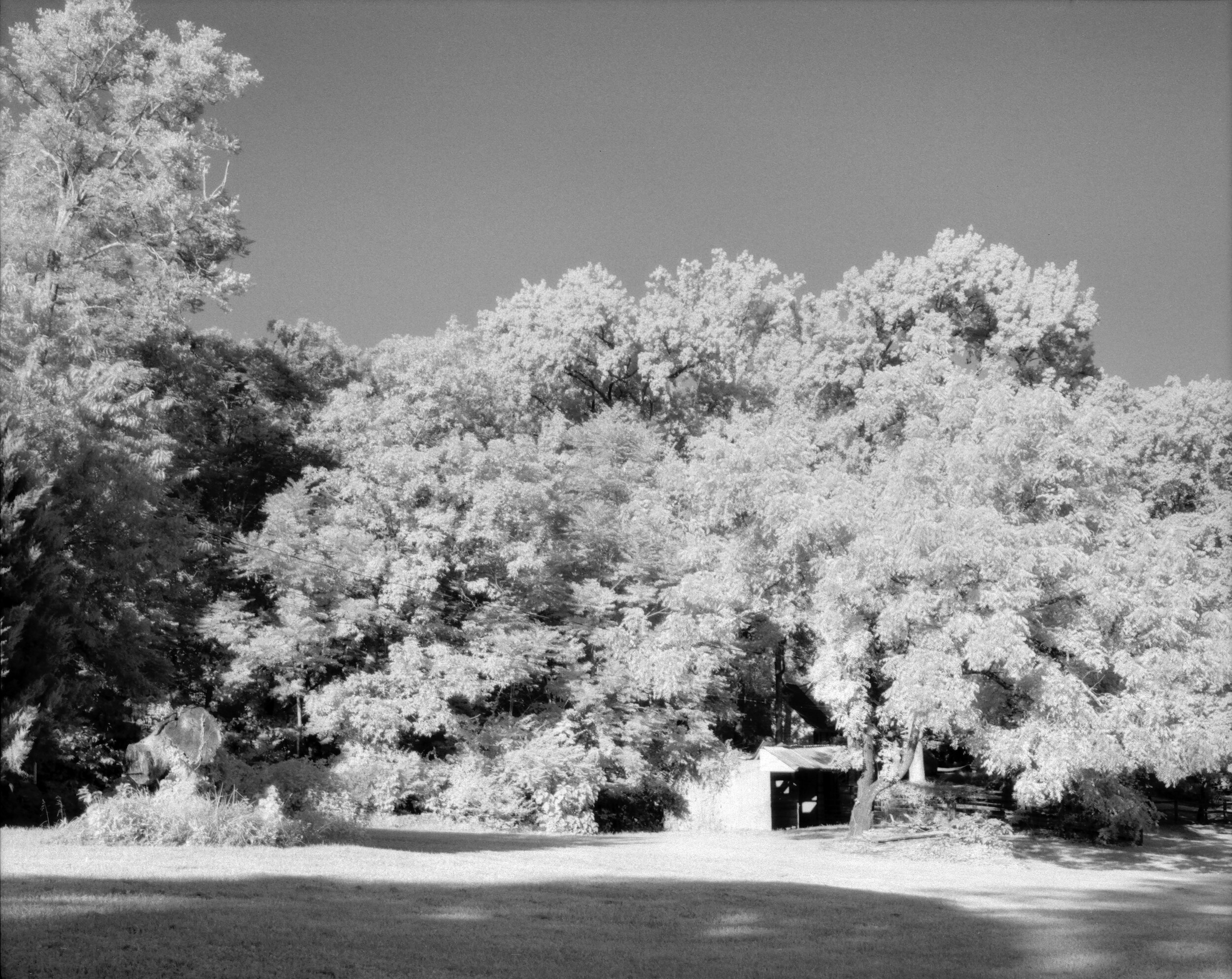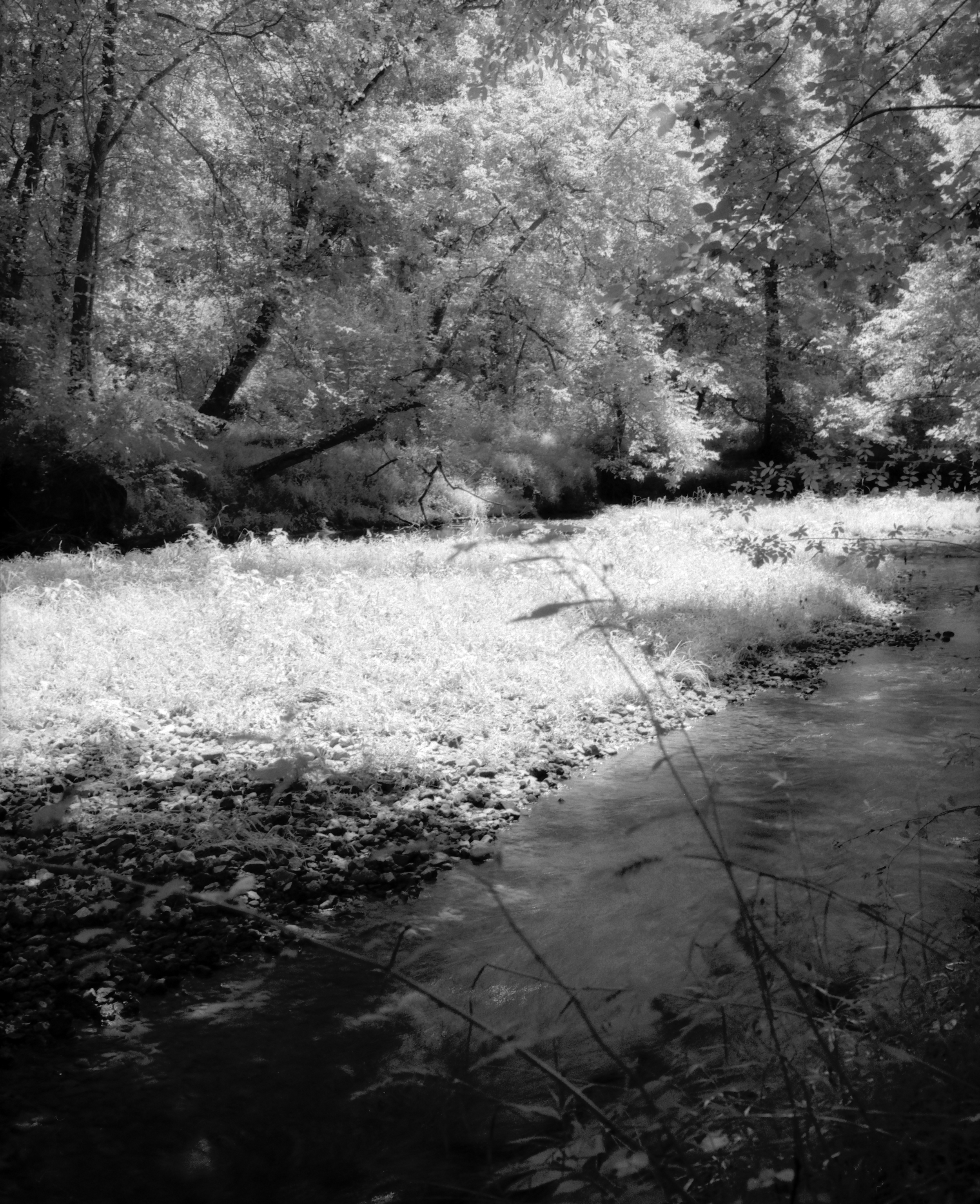Before buying this filter, I had been wanting to shoot infrared (or near infrared) film for some time. Having seen the effect it can have on landscapes and foliage, I was intrigued and needed to try it out for myself. However, shooting infrared black and white film requires the use of an infrared filter, a filter which blocks all incoming light EXCEPT for the infrared wavelengths from reaching the film.
Unfortunately, almost all of the well-respected and well-documented infrared filters like the Hoya R-72 are expensive. Like $90 for a single filter expensive.
I was not about to spent $90 extra dollars for a filter without knowing whether I enjoyed shooting infrared or not. So instead, I bought some Ilford SFX-200 (the cheapest near-infrared 120 film I could find) and started shopping around for cheaper infrared filter alternatives.
Lo and behold, I found the Opteka HD2 Series, which includes their R-72 Infrared filter in a variety of sizes. At around $15, It seemed to meet exactly the criteria I was looking for: less expensive, same general idea and easily available. However, at that point in time I saw next to no reviews for the item, so I was unsure if I was just getting scammed.
Ultimately, I bought the filter and have used it multiple times with pretty promising results, so I thought I may as well type up a short review to reassure anyone thinking of buying an Opteka as an inexpensive alternative to the Hoya or other infrared filters.
Packaging:
As far as packaging and excess materials go, the Opteka is barebones. It comes in a plastic clamshell with a small plate of styrofoam separating the filter from the hard plastic on the inside, and that is about it. The outside of the clamshell tells you all about the general idea of infrared photography and shows you a neat little graph of the different wavelengths reflected by different objects, but that is it.
Ultimately, I wasn’t looking for flashy packaging or excess manuals/instructions so I am completely okay with this aspect of the filter.
Build Quality:
The filter itself seems quite well made. The ring is made of hard metal and the glass itself feels thick and strong. I have not noticed any scratches on the filter thus far, and I have never felt like the filter would fall off the camera or come unscrewed at any point. The filter feels well made and sturdy.
Effectiveness:
This is the part I was worried about when buying the filter. I thought that maybe it was too good to be true, and that when I tried shooting infrared film with the filter on my images may just come out standard and boring. However, as you can see from the image examples below, the Opteka R-72 does exactly what it says on the tin.
I bracketed every shot I took with this filter to ensure I was getting a proper exposure, but with nearly every shot I got the desired effect I was going for - dark skies/pronounced clouds (not as obvious in the two images above) and dreamy, snowy vegetation. I think I could even over-expose by one more stop in order to make the vegetation a starker white, but that could also be down to variances in development time.
Overall:
In summary, I think the Opteka HD2 R-72 Infrared Filter is a fine filter if you aren’t looking for all of the bells and whistles and the prestige that comes with the Hoya R-72 or similarly expensive filters. I don’t doubt that those filters deliver better image quality and a better user experience, but if you are only looking for a simple way to shoot infrared film without spending a ton of money, I think the Opteka R-72 is a perfectly acceptable filter that gets the job done.




